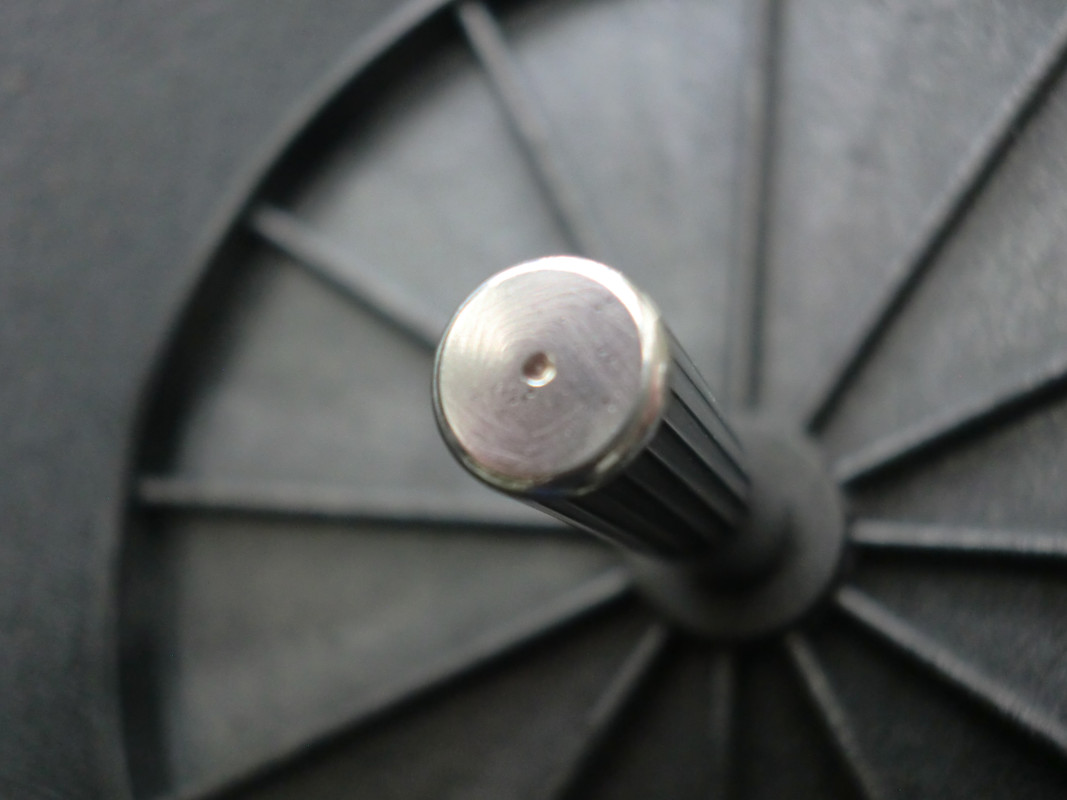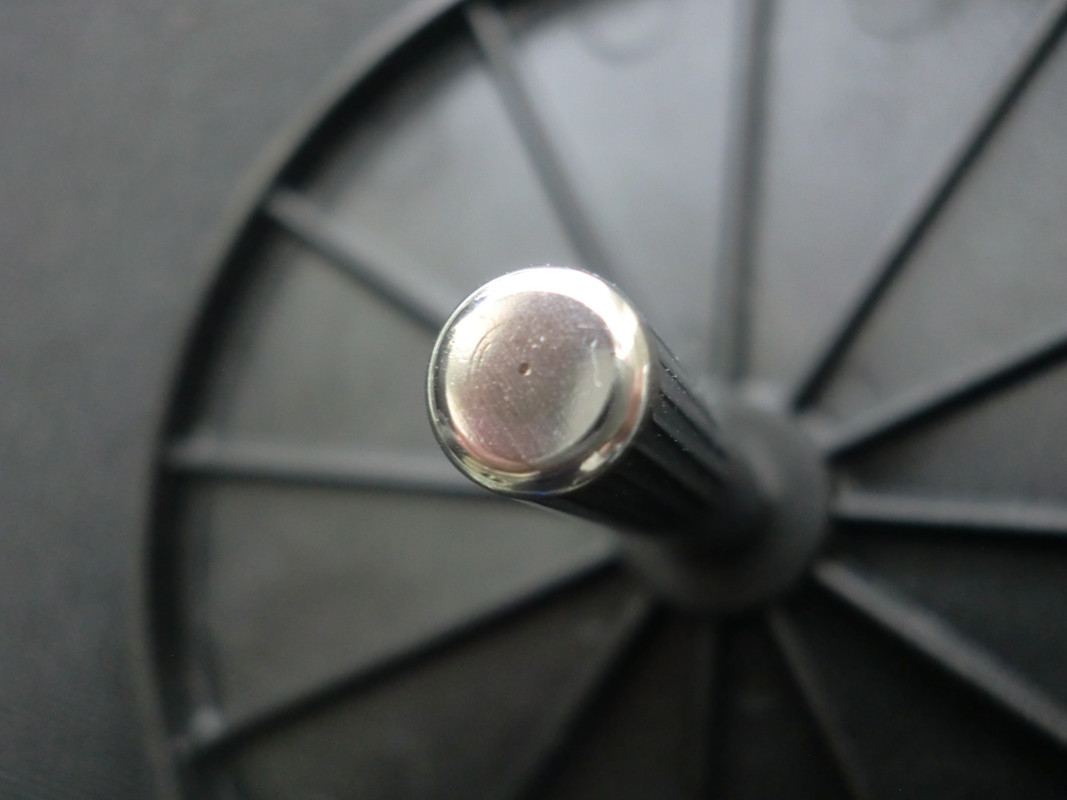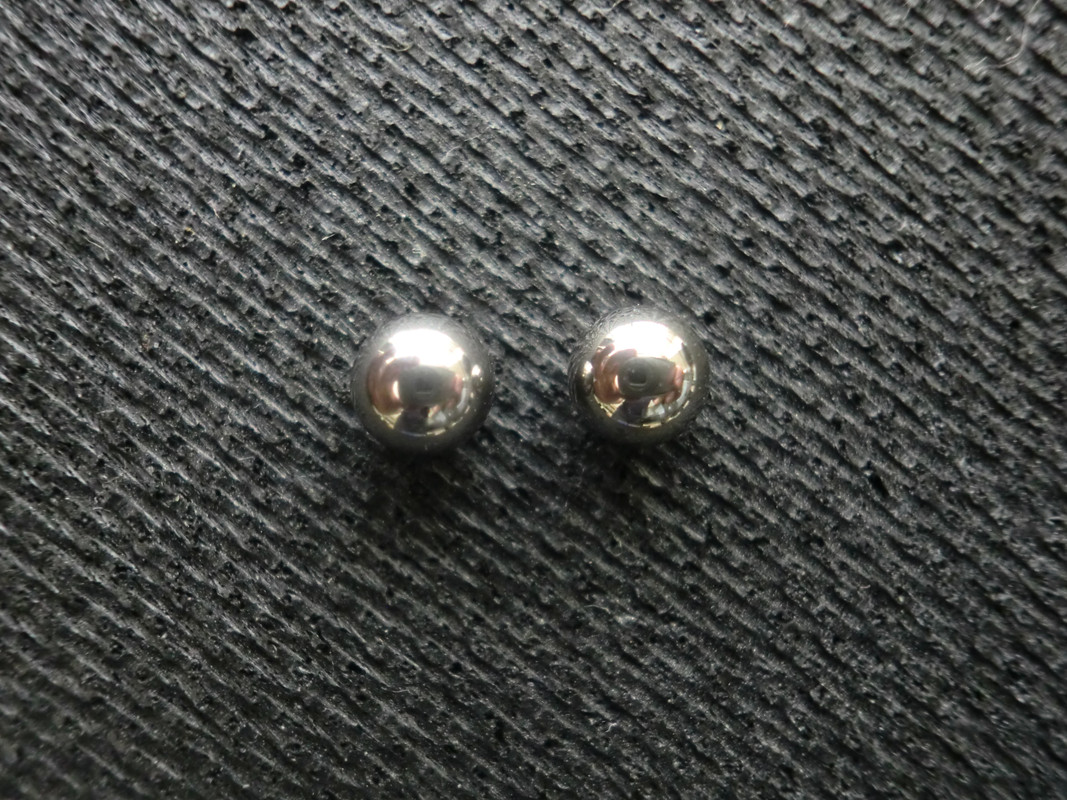Current P2 was introduced in May 2016. As the OP describes his as 'the latest P2' he may not have been using it for long.
As reference, I've a hub/spindle here that had obviously been run dry for a very long time. This from an otherwise minty Planar 3/R200, so April 76 through just prior to April 83 vintage. The original owner pulled the hub out to show me its condition, and it was dry as a bone with a dimple that was hard to miss. Under a magnifying lens the ball looked for all the world like a classic black and white soccer ball. Funny enough, a thorough clean and lube and this deck actually sounded quite good as was. The spindle shaft was surprisingly unmarked and shiny. Regardless, I replaced hub/spindle and ball soon after.
Planar 3/R200 vintage run dry bearing pictured below. Another couple of decades of such abuse and this would have been fully converted to captive ball. Spindle side beautifully burnished to a perfect mirror finish, likely more perfect than when new.
P3 2000 bearing below. Some spindle end forced down marks from bloke who just couldn't resist pulling his out to impress guests. White specs are micro dust particles, as I neglected to give this one a final flick of the duster prior to the shot.
And, here are the balls that came with each. After a good clean I couldn't tell which came with what without using my jewelers loupe. The one one the left isn't actually dull, just not given a polish before taking the photo (could be the one from P3 2000 with dust on above).








